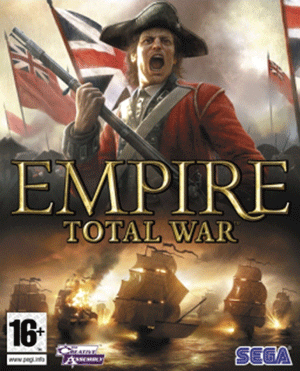 Review by Jason Dobry
Review by Jason Dobry
Empire: Total War
Developer The Creative Assembly
Publisher SEGA
Released March 1, 2009
Available for Windows XP/Vista
Verdict ![]() 3/5 Middlin’
3/5 Middlin’
“Fans (like myself) of prior TW titles will appreciate the massive improvements to the turn-based campaign, but may be disappointed by the sleepytime AI in both the real-time and turn-based portions of the game, the infuriating pathfinding, and poor unit diversity.”
![]()
As a devoted Total War freak, I felt obligated to try Creative Assembly’s most recent offering, Empire: Total War. I say “obligated” because when I think of 18th century warfare, I think of silly hats, primitive line formations, and Mel Gibson. Not that I wouldn’t savor a chance to send Mel Gibson into mortal combat, but I prefer the swords, bows, and politics of Rome: Total War, Shogun: TW, and Medieval:TW to that of wigs and muskets.
Here’s the short of it: fans (like myself) of prior TW titles will appreciate the massive improvements to the turn-based campaign, but may be disappointed by the sleepytime AI in both the real-time and turn-based portions of the game, the wretched pathfinding, and poor unit diversity. These negatives are so significant that I would describe this game as a small but significant step backwards for developer Creative Assembly despite the advent of their much-heralded real time naval combat engine.
Dog-Paddling in the Deep End
After installing the game, I immediately jumped into the “Grand Campaign,” hoping to conquer much of the world as the small but spunky nation of the Netherlands, or, as ETW calls it, the “United Provinces.” I was lost almost immediately. The campaign map now covers the Americas and India in addition to Europe as well as three “trade theaters” in Africa, South America, and the East Indies. More on all of this later. As in all TW games, each region contains a city, but these regions also contain any where from zero to three towns of various sizes, each with each its own improvements. Resources like iron, gold, cotton, tea, spices, furs, coffee, and tobacco spatter the terrain.
I continued to poke around for information on the upstart Dutch and found the ultimate TW blasphemy: a tech tree. More specifically, a tech tree with seven branches and seven to twenty or so techs on each branch. I recoiled in confusion and horror and retreated to the safety of the tutorial.
The tutorial taught me two things: 1) I don’t like long tutorials, and 2) If I ever get my hands on a time machine, I must never, ever visit the American Revolution or I will eviscerate history. CA spent some time on this tutorial, placing it within the context of the first Jamestown settlements and tracing it through the American Revolution. George Washington nobly narrates the story between scenarios, though I don’t know how many scenarios exist because I quit sometime during the third. It just didn’t move quickly enough and I wasn’t learning anything about what I most needed to know about the tech tree, towns, or resources. Oh, and I killed George Washington. Well, the French killed him during what I think was the French and Indian War, but my order for him to lead some glorious charges against the vile French may have contributed somewhat. Generals should lead, damn it all, though I confess this strategy would leave any military with a dearth of two-, three-, four-, and five-star generals and, in this specific case, a president. I returned to the grand campaign and resolved to punish the French for their crimes. Please understand that I do not advocate the killing of French people; I just enjoy ending their petty digital lives in my murder simulator.
All TW games boil down to two major components: the turn-based strategic map and the real-time combat. All empire building, sabotage, diplomacy, and finance management occurs in the former. All annihilation of French armies via musket, cannon, and cavalry takes place in the latter. Upon starting the game as any of the European powers (it’s not possible to play as the Huron Confederacy or any “minor” powers, amusing as it would be to conquer Europe with them), any TW veteran will spot the usual assortment of cities and geograpical features, albeit with more eye candy like mesmerizing water effects and trees blowing in the wind.
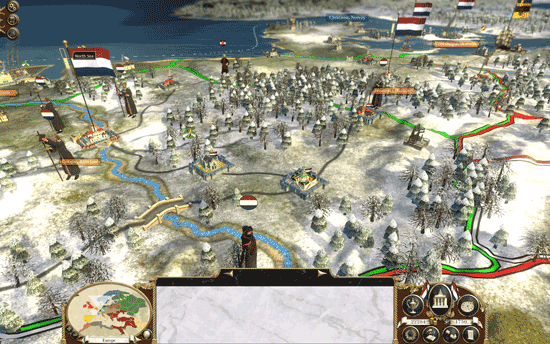
- New and improved, but still familiar
It’s apparent that CA focused on deepening the gameplay and strategy in the campaign map and they in most cases succeed. Players now not only build improvements in their cities, but also in local towns and resource-gathering locations. As the population increases in a capital city, more towns spawn in the region, granting the potential to accumulate more improvements like colleges, inns, and churches. In practice, this also gives the player and the AI more targets to attack and offers a way to discourage armies from hiding behind fortress walls. I used this to my benefit several times, ignoring entrenched armies to instead pillage their towns and resources, something not possible in prior TW games. Plundered sites require a large amount of money to repair, and more importantly, any improvements within do not function while damaged. This is also vital because special units like ministers, rakes (spies/assassins), and gentlemen (scholars) cannot be “bought” by the player; they spawn at semi-regular intervals within their corresponding improvements.
As for city and landscape improvements, CA did a fine job of clarifying the significance of potential upgrades, such as new units, bonuses to income, and effects to population happiness. Extensive tool tips highlight every possible selection, and as every improvement can be upgraded several times, this proved critical. I appreciate their inclusion, though it appears to come at the cost of an anemic manual.
Resources now dot the landscape, and these also provide new strategic targets. Unlike a game like Civilization IV, these resources do nothing other than provide trade bait for the trade system. All trade takes place over sea and requires a commercial port on both parties’ shores. There is a trade “market” of sorts with fluctuating values: spice may be worth much more than cotton in 1710, but these positions may reverse in time. I was never clear on what I was supposed to do with this information; there’s no way to allocate manpower or production of one resource over another. I suppose I could focus on improving my tea plantations instead of my coffee if tea trades for more money, but if and when their positions reverse, there’s no way to scale back my tea plantation once I’ve committed. Perhaps this would have been an inappropriate level of economic management in a wargame, perhaps not.
Trade routes can be pirated by enemy navies, stealing a portion of the trade income, or blockaded entirely should a navy of any size enter a trading port. Though I appreciate the economic warfare, it seems somewhat oppressive when one tiny sloop can terminate all of my trade with a nation like Great Britain because it’s managed to enter their one commercial port unopposed. What, doesn’t G.B., one of the largest colonial powers during the 1700s, have more than one commercial port? If they do, how do I use it to prevent blockades? Again, a manual more helpful than colon cancer may have shed light on these issues. While thorough, helpful, and easily accessible, the tool tips are not terribly efficient as a reference tool.
The most significant of these changes by far is the addition of a research tech tree, something avoided in all previous entries in the series. The tech tree contains three large branches–military, industrial, and philosophy, as well as sub-branches (military, ordinance, and naval in the case of military, for example). These techs provide access to new units (though not as many as one would reasonably hope), new buildings and upgrades to existing ones, and bonuses to income. The player can research one technology per college improvement, and though this wins points in realism, it loses out when I control ten colleges and no longer need to make a choice. I enjoy prioritizing my research and building my strategy around that choice, but when I’m capable of researching everything that’s available to me, it removes that choice. No choice = no strategy = no fun.
Many of the technologies enjoy that “coolness” factor like carcass shot, explosive shells, lime juice and sauerkraut, etc. But others, particularly those in the philosophy tree with names like “Secular Humanism” and “Utilitarianism” hardly excite my imagination. It’s likewise hard to get excited about “Spinning Mule” even if it does net me +100 gold per town. It’s almost as if CA had enough ideas for thirty cool technologies and then were forced to wring out thirty more under deadline with .44 Magnums pointed at their skulls. Nevertheless, I approve of the tech tree’s addition and look forward to its reimplementation in upcoming TW titles.
War…War Never Changes
Though the turn-based strategy map is fun, it functions best as the context for the real time battles. Now, however, the focus is on missile units (muskets) and artillery. Gone are the phalanx and swordsmen of RTW and M2TW (though pikemen are available in ETW, they become obsolete very quickly), and cavalry must take care not to stray within musket range lest they be mowed down. I lost more than one general that way, though good ol’ George’s end was thankfully less ignominious.
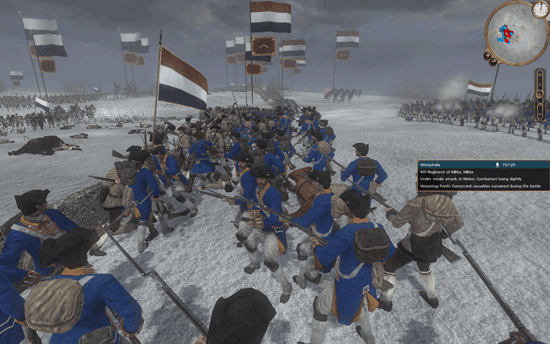
- That poor horse…
Graphically, these battles are impressive. Gun smoke billows, men clutch at their chests and fall to one knee, soldiers impale each other on bayonets, and artillery shells and cavalry send bodies flying through the air. I enjoyed the challenge of adjusting to missile-based combat, though most battles quickly devolve into hand-to-hand slug fests.
Unfortunately, CA once again created the ultimate buzzkill: lazy, flaccid, and cognitively-impaired AI that does all but roll over and expose its pink, meaty throat before rolling its eyes back and gurgling its way into sweet, sweet oblivion. Even on the hardest settings, the AI was predictable and impotent. To borrow Sir Sakey’s term, “apologists” are quick to point out the game’s complexity and all of the programmer’s obstacles and how we should all feel sorry for them and just send them a hooker holding a bag of money. [I have no recollection of ever saying that. -S] No. No, no, no. This is the same A.I. I saw in M2TW and RTW–it’s passive, buggy, obtuse, and laughably vulnerable to any kind of semi-competent flanking maneuver. To be fair, the A.I. did ambush my unprotected artillery on several occasions, and it knows enough to target my general and his bodyguard whenever he strays too close to the action. Fine, so it punishes bad play. Even so, it consistently concedes strategic points like forests, low walls, and high ground and just generally plays with all the tactical ability of Lindsay Lohan.
And my God, the pathfinding. Let’s just call it “wallfinding” for the sake of accuracy. The vein in the middle of my forehead throbs even as I begin thinking about it. I can’t–I don’t–WHY?!? Why isn’t this fixed? Why does my charging cavalry randomly stop just before rampaging through enemy infantry? Why do my garrisoned infantry refuse to take the shortest route to and from one fortress wall to another? Why, when told to move from one position to another in the same fortress, do those same infantry instead open the front gate and attempt to bumrush the invading army, only to let in enemy cavalry? Why do my armies run toward the enemy when I order a strategic withdrawal? Why, damn your eyes, WHY? Most of the computer’s success few successes against me usually feature my losing battle with the pathfinding.
Finally and inexplicably, CA seems to have significantly scaled back unit diversity from that of prior TW titles. After 25 hours of gameplay, I have encountered only four or five different type of musket units and only a handful of cavalry. The game regularly reskins and renames mechanically identical types of infantry so as to give an impression of diversity. For most of my game, I used Line Infantry and Grenadiers exclusively as all other options were simply inferior (again eliminating strategic decisions for the player) or identical. For all of this disappointment, CA finally allows me to rename my units and ships–if I want “Dobry’s Death Squad” as my premiere regiment, then I can make it so.
Hulls on Parade
In prior TW games, all naval combat was automatically resolved by the game. Finally, four games after the original Shogun: Total War, we have a way to directly control our navies and sink our enemies’.
The developers wisely chose to keep the sailing model simple and accessible. The tool tips mention something about different ships handling better under varying wind direction, but I have yet to use this to my advantage. It’s not that I don’t want to, but when I’m controlling a dozen ships against a dozen enemy vessels, I have little time to consider whether my third rate ship of the line is tacking better than my brig. There’s simply no time to micromanage my ships during battle, and if I simply tell a vessel or two or three to “attack” another so I can focus on controlling three other vessels, they sail in lazy circles and occasionally lob a few cannonballs at the enemy. At least they miss my ships as much as they miss the enemy’s.
This need to micromanage my ships to ensure efficiency stands in stark contrast to the classic TW land battles. On land, I can reasonablyassume that a land unit will continue attacking a unit or holding a position until it or the enemy routs. True, they will almost always benefit from direct orders (as they should), but they won’t get lost or run away from the action. A.I.-controlled friendlies, however, stray from combat, fail to reload effectively, and generally just get in the way. In any battle of moderate size or greater, after zooming in to coordinate a triple-ship boardside against an enemy vessel, I would usually zoom back out again to find several of my ships sailing away from the action with empty cannons. I even tried boarding enemy vessels, but this proved a cumbersome operation that usually involved failure and the bloody death of many of my sailors. It’s not clear whether this was the designers’ intent; boarding should probably be somewhat difficult, but I couldn’t seem to get my grapeshot to function, even at close range. Sailor-to-sailor combat is completely automatic and as grapeshot seems to be the best way to soften up enemy crews, this was a disheartening turn. It also wasn’t clear when I successfully captured an enemy vessel for my own use in later battles, even when I apparently won the man-to-man combat.
Despite the micromanagement frustrations, the game provides a good variety of weaponry and ship upgrades. Players can target the sails with chain balls, the hulls with traditional ordinance, or the crews with grapeshot (buckshot). More and better types of ordinance become available with new technologies and I have yet to try the treacherous-sounding bomb ketch and the rocket frigate. Any nation at the top of the naval technology tree will savor the moments when its first- and third-rate ships of the line unleash 90-cannon volleys against inferior sixth-rates, brigs, and sloops.
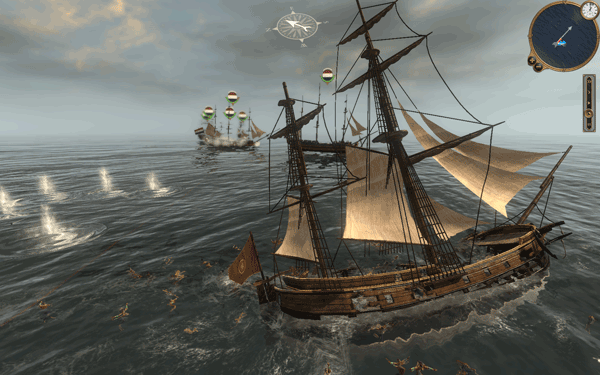
- Now we just need some sharks.
If nothing else, CA developed a visually stunning engine: ships explode and send planks of burning timber spinning into the air as heat distorts the broken hulls, burning vessels sink slowly as sailors tread water before sinking beneath the waves, sails flap in the wind, masts break and lie awkwardly on the deck like fallen trees, and ships lean and show hull damage as they take punishment. CA captures the beauty of these ships as successfully as they convey the horrors of naval combat.
A Game Forever Promising
CA chronically and unashamedly promises significant upgrades to AI and pathfinding after releasing all TW games, but I have yet to see a patch in any that comes within a continent of these vows. I suspect an expansion will add new units, but I’m not eager to cough up another $30 or so for something to “complete” the game. While I’m at it, I might as well buy the game manual, commonly referred to by publishers as the “strategy guide.”
I want my strategy games to be challenging and Empire simply falls short of the mark by several city blocks. I do not claim to be a military or economic genius, but once I acclimated to the economic and city-building changes, I was drowning in money with a massive army and navy to protect said coffers. Even so, I did in fact have fun playing the game for about twenty hours or so, and if I seem harsh, it’s only becaues I played M2TW and RTW for something like a combined 250 hours. A casual gamer would say I’ve simply “played out” the concept and should move on, but as any TW fan knows and understands, CA’s games fill the elusive real-time tactical/turn-based strategy niche. Once they a way to evolve the AI and pathfinding as much as they’ve evolved the mechanics and graphics, they will finally create the masterpiece that everyone else seems to think they’ve already made with Empire. ![]()
Keep an eye out for Jason’s upcoming detailed account of the Rise of the Dutch right here on Tap-Repeatedly.
![]()
Minimum System Requirements: Windows XP/Vista; 2.4GHz CPU; 1 GB RAM; 256 MB video
Reviewer’s System: Windows XP SP3; 2.4GHz Core 2 Duo E6600; 4 GB DDR2 RAM; 896 MB GEForce GTX 260


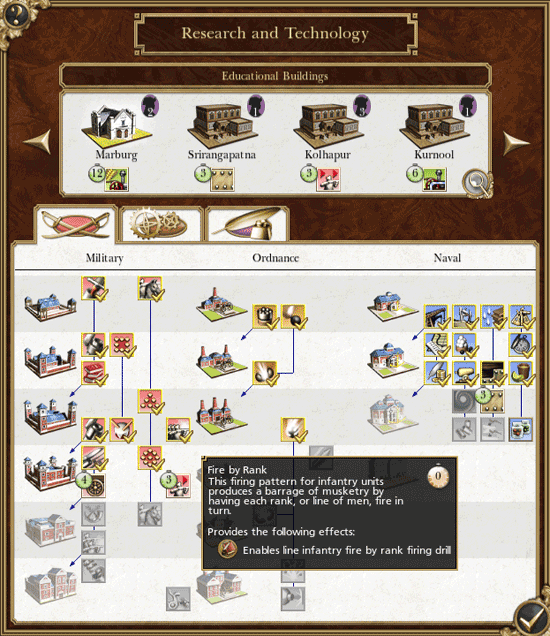
Great stuff, Jason. I held back on this game despite really loving Rome: Total War; fact is, it was Rome, so I have a natural affinity for the subject matter. The Age of Funny Hats never interested me.
For all that I have said that pathing AI, and AI in general, is incredibly difficult to program, by this iteration of their popular franchise I’d expect a team like The Creative Assembly to have made at least some iterative improvements. Based on your review I’m not convinced they even did that.
Thanks for the review!
the french gave us liberty you know….
your real disappointment was probably not being to murder teenage girls with your assassins
seek help
gun powder ruins war sims imo. Cannons and muskets are just not as cool as infantry, cavalry, and archers.
now gun powder makes great FPS. while spears do not.
Yes, I forgot to mention that assassination/sabotage missions seem much, much harder than in M2TW.
As for your accusation regarding murder, here you are:
1) When you say, “murder teenage girls,” you mean “terminate the makers of the would-be generals of our enemies.”
2) Those girls weren’t just wandering the meadow sucking on lollipops and cooing at butterflies; they were forging alliances with my enemies, sleeping with them, and trying to marry MY GENERALS. If they’re going to poke the bear with a stick, then they shouldn’t be surprised when they find themselves missing a few key arteries.
3) My assassins needed practice. Not so much in the act of killing so much as in the act of sneaking through their guard and in disposal of any evidence that could trace the killing to my nation.
4) War is hell.
So pfffft.
Great review. The path-finding and micromanaging stuff would kill me. I think I will pass.
Great writing, Dobry, and I agree with you right down the line. I’ve been a big fan of the TW games, but this one was a letdown, and unless for the next one they really focus on making it smarter instead of prettier, I’m done.
Interesting review – similar to several others I’ve read. I still have got the game – for one thing I’ll be seeing if the AI can be improved (being a budding AI programmer) but also want to see where it failed, why, and how it might be fixed even if I can’t have a direct hand in it.
I however want to above all support the single player turn/real time strategy genre. There never was a million of them compared to action games, and so when they appear most of the time they’re very enjoyable and well worth sinking a dozen hours easily into, if not more.
I still never got too far in my Medieval 2 game though…I hope that I can get through this one (or perhaps I should go back to M2TW later…)
The game appears to be prone to crashing according to forums
( http://www.twcenter.net/forums) and personal experience, although patches are supposed to repair this. I haven’t completed a single player campaign yet due to this but the multiplayer battles are strong.
There are issues with Steam as well, for the multiplayer you need to select server download, so its regional. In the past ( ie RTW & MTW2) multiplayer has been international. Line infantry does have variation in accuracy and melee ability and the multiplayer is tactically challenging with ranking and so on. Steam does facilitate player communication well, in game at least, so coordination is actually easier. In multiplayer organisation and timing become important.
I miss the ability to retreat in multiplayer, having to watch your men die when the cause is obviously lost and I feel bad about having to gun down opponents soldiers because they cannot surrender, part of fighting battles should be about minimising casualties. It feels dishonourable.
Matt–
The latest issue I experienced was after one of their patches and it involved regular crashes to the desktop. They patched the program after about 10 days after releasing this broken patch and it solved my issues.
Thank you for your input about multiplayer. I have not tried it in ETW, but I would expect it to be tactically challenging when playing against human opponents. Although I like multiplayer gaming, I prefer single player in my TW games, mostly because they grand campaign map is usually such a delight. Maybe I’ll give it a try.
I didn’t see much variation in line infantry, save for a few points of accuracy and reloading skill here and there. In most of these cases, however, it was simply a case of “one is clearly better than the other, though slightly more expensive,” and so there was little reason to take anything but the best available, as long as I had some artillery, some cavalry, and some infantry. M2TW seemed to do a better job of giving me significant decisions about which infantry to use (i.e., berserkers with little armor but superb melee skills vs. pikeman), while ETW just encourages me to have 14 of the same type of line infantry.
When I invaded India and was able to make V.O.C. Infantry, their stats were identical to my line infantry’s. They just wore different uniforms and had a different name–hardly thrilling.
Andrew–
I’m sure making a competitive AI is a daunting challenge for any development team. Sure, they could do it with a gigantic amount of money and resources, but even SEGA must kneel before budgets and time restrictions. Still, after five TW games, I expect some improvement, especially in the pathfinding.
The AI doesn’t need to match the best human opponents so much as just avoid doing anything overtly stupid (like exposing its general to cannon fire or allowing me to flank it in every battle). It would be better if it could also play more aggressively and surprise me every once in a while, but perhaps my expectations are too high. Since I’m not an AI programmer, I have no idea; that’s why I pay people to make my games for me.
As for the campaign map, I was completely disheartened by the AI’s extreme passivity. Even when I declared war on Spain, they sent one large army my way, and after I destroyed it, I successfully sued for peace. Spain! While such cowardly AI is regrettable, I would caution any future AI programmers against the easy solution, which is simply making all AI countries “hate” the human player. Again, making the AI function well in any diplomacy model must be difficult, otherwise we’d already have a game with great diplomacy.
I’ve no idea how it is programmed, but the design side usually tends towards making the AI dumb as a bunch of rocks because otherwise the players complain – and any time the AI looks like it is cheating (even if it isn’t) they complain. Sigh.
One thing they could have done (and didn’t do much in Medieval) is boost the competency of the AI separate from the resource difficulty. If you want tactically strong AI for battles – set that to “Insanely good”, while you might select a different level of AI for the campaign map if you want an easier time out of battle – maybe just “Moderate”. Spelling out that “Moderate” does X, Y and Z less often thus is easier, is a good way to go about it.
I’d love an AI interface where I could choose to enable and disable specific things (especially if you ever have allied armies, or 3 way battles). This would reveal the layers that the AI can achieve.
For a turn based map game though, there is also the longer term possibility of making the AI more efficient as the game goes on – so early leaders can get knocked out, but later on do gain a bigger foothold and put up more resistance.
Lots of possibilities, I don’t think AI was a major focus of this development, but I have seen some stuff from the developer saying it’s improved – no doubt navel warfare drastically upped the amount of work, all things considered.
I’ve still not played it, will do soon! 🙂 (or maybe leave it until there is even more patches, heh)
You make a good point there, Andrew – when the AI is competent people often accuse it of cheating. Galactic Civilizations 2 (which has incredible AI) actually went so far as to state explicitly that the AI wasn’t cheating, it was just really, really smart.
Of course, that does not excuse bad AI. One of the interesting things about AI in general is that some of the hardest items to program are some of the easiest for humans to manage – i.e., pathing. We humans have no problem walking in the direction we want to go, even if our destination is abstract, but it’s a bitch to program that kind of thing into an AI routine.
Nonetheless, it can be done, and shame on the Creative Assembly for still failing to do it after all these years.
Great ship battles in this game
[…] I am not a fanboy. I tried the recent Empire: Total War and didn’t particularly care for it. I don’t want rifles in my Total War Games; I want cavalry, spear, swords, trebuchets, […]